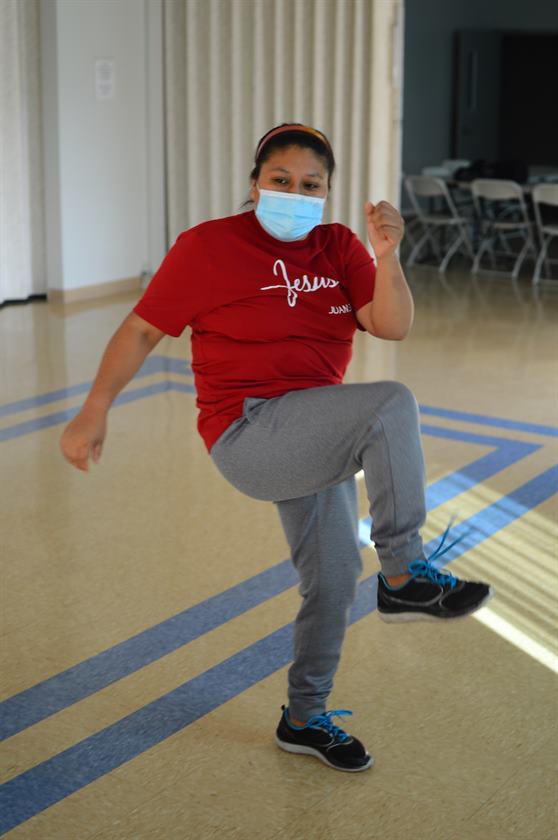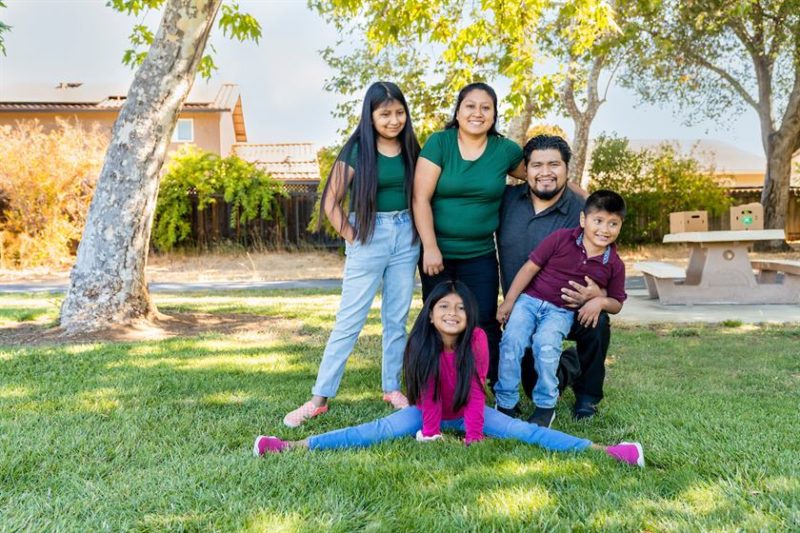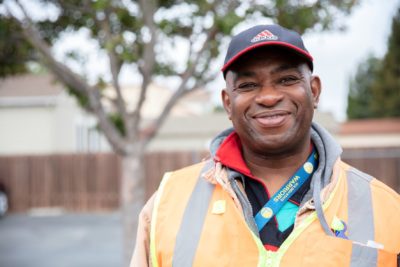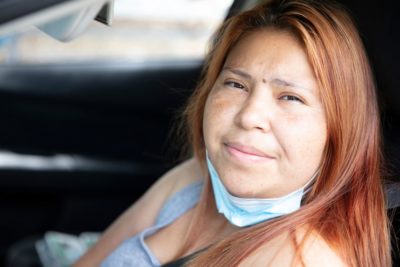Before the pandemic, Ana would save small amounts of her husband Oscar’s paychecks to provide for their children’s futures. However, after Oscar lost his job in April 2020, the nearly $10,000 that Ana had saved over eight years was completely depleted within eight months, used as a lifeline to pay for rent, utilities and food.
After immigrating from Mexico, Ana and Oscar hoped their kids would have more opportunities than they once did. Perhaps the savings would help pay college tuition for Kimberly, 12, or purchase art supplies for Montserrat, 8, who loves creating landscape paintings of sunsets. It might also have covered the costs of therapy for Oscar Jr., who is 7 years old and autistic. Ana calls Oscar Jr. her “special child” who “taught us to overcome any obstacle in our lives.”
In a recent survey of Second Harvest clients, 60% of survey respondents reported they have less than $100 in savings right now.
A Family Faces Job Loss and Food Insecurity
Before COVID-19, Oscar travelled throughout Northern California to work at construction sites. Often returning home late at night, Oscar’s motivation was his children. He shared, “It’s nice when I come home and (my children) open one eye. One eye’s open, the other is closed, but they say, ‘Daddy, you are home.’”
Oscar struggled without any income to support his family from April to December 2020. “I had a huge weight on my shoulders but didn’t convey it to my children. I bore it all alone because I am the head of the family. I couldn’t cry in front of them,” Oscar said.
Ana and Oscar focused on avoiding debt while still covering essential expenses. Due to distance learning, the family’s one-bedroom apartment also became a classroom and a cafeteria, which meant ensuring their children had reliable internet access and providing more meals at home. Faced with these mounting costs, the family used their savings to pay rent and then turned to Second Harvest of Silicon Valley to fill their kitchen with fresh produce, dry goods, meats and eggs. Ana reflected, “Thank God; He allows us to have access to these (grocery distributions) and hearts like the ones that give without receiving anything in return … we really did not have enough to buy food.”
Hope Through Community
In addition to providing Ana and Oscar with financial relief, groceries from Second Harvest also inspired a feeling of hope and community. The couple felt encouraged when they witnessed the mountains of boxes and friendly volunteers at the grocery distribution. Reflecting on the numerous cars being loaded up with food from Second Harvest, Oscar shared, “I know that every kid who opens milk and pours it into cereal … smiles. … Everyone is happy and content with hope in their hands in the form of a box or a bag. It’s the hope that many people carry to their homes, that Second Harvest’s been bringing to every home.”
Kimberly, Montserrat and Oscar Jr. start looking for milk as soon as they see boxes from Second Harvest and immediately prepare peanut butter and jelly sandwiches with glasses of milk. The kids also search for their favorites—broccoli and corn. They appreciate fresh, nutritious food that helps them stay healthy. Ana explained, “Food that Second Harvest brings us (is) an opportunity to gather together. And we cook it with love. We unite as a family and sit around the table. And we savor the food they bring us.”

Ana helped start an exercise class to support community members struggling with mental health during the pandemic. She shares fruit from Second Harvest of Silicon Valley so that the class can refuel after their workout with a nutritious snack.
A Slow Recovery Begins
Nevertheless, economic recovery will take Ana and her family years. Oscar has been getting more work but also has developed chronic muscle pains that limit his ability to work long shifts. Describing the drastic effects of the pandemic, Ana confides, “It took years to save up this money and only months to spend it … not because of us but because we were living through a pandemic … we couldn’t foresee this, couldn’t do anything … it will take me eight years to get our savings back.” Without a steady income that can cover the Bay Area’s exceptionally high cost of living, Ana and Oscar will continue to rely on food from Second Harvest.
Ana still hopes that the family will rebuild its savings. She hopes to move them into a bigger home not only to provide the children with privacy but also to inspire them with an example of what hard work can achieve. Ana told us, “(Our children) will be able to do more things than we can do. We want them not to settle with what they have. … Now we are living in a small apartment, but they can be inspired to have a house one day or a bigger flat, a bigger place appropriate for them.”



